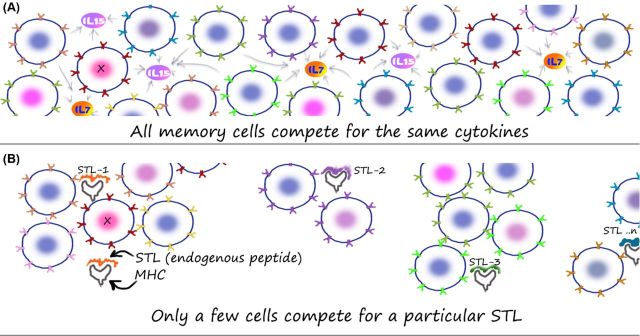Figure 2.
Structure of the memory T-cell population in vivo. A simplified cartoon comparing how memory T cells competing for cytokines alone (A) or endogenous peptide–MHC complexes (termed subthreshold ligands or STLs after Grossman and Paul) alone (B) may be visualized. An animated version of this cartoon is available at http://nevillab.org/index.php/projects/immune-memory (A) Cytokines such as IL-7 and IL-15 are critical mediators of memory T-cell survival. In the simplistic ‘well-mixed-pot’ model, all memory T cells are able to compete along equal lines for access to such factors. Along the lines of a population biology framework then, the amount of such factors in vivo will limit the total number of T cells that can be maintained in the body. The question of how limiting such factors are and how rigid the population ceilings imposed by such limits are still under investigation. (B) If the T cells compete for a specific STL, then the niche that they can compete in can be quite small—as opposed to a global competition cartooned in (A). Although only STLs are shown in (B), in vivo, it could be a combination of both cytokines and STLs. The important point would be that the diversity element would come from the inclusion of STLs into the competitive framework.

